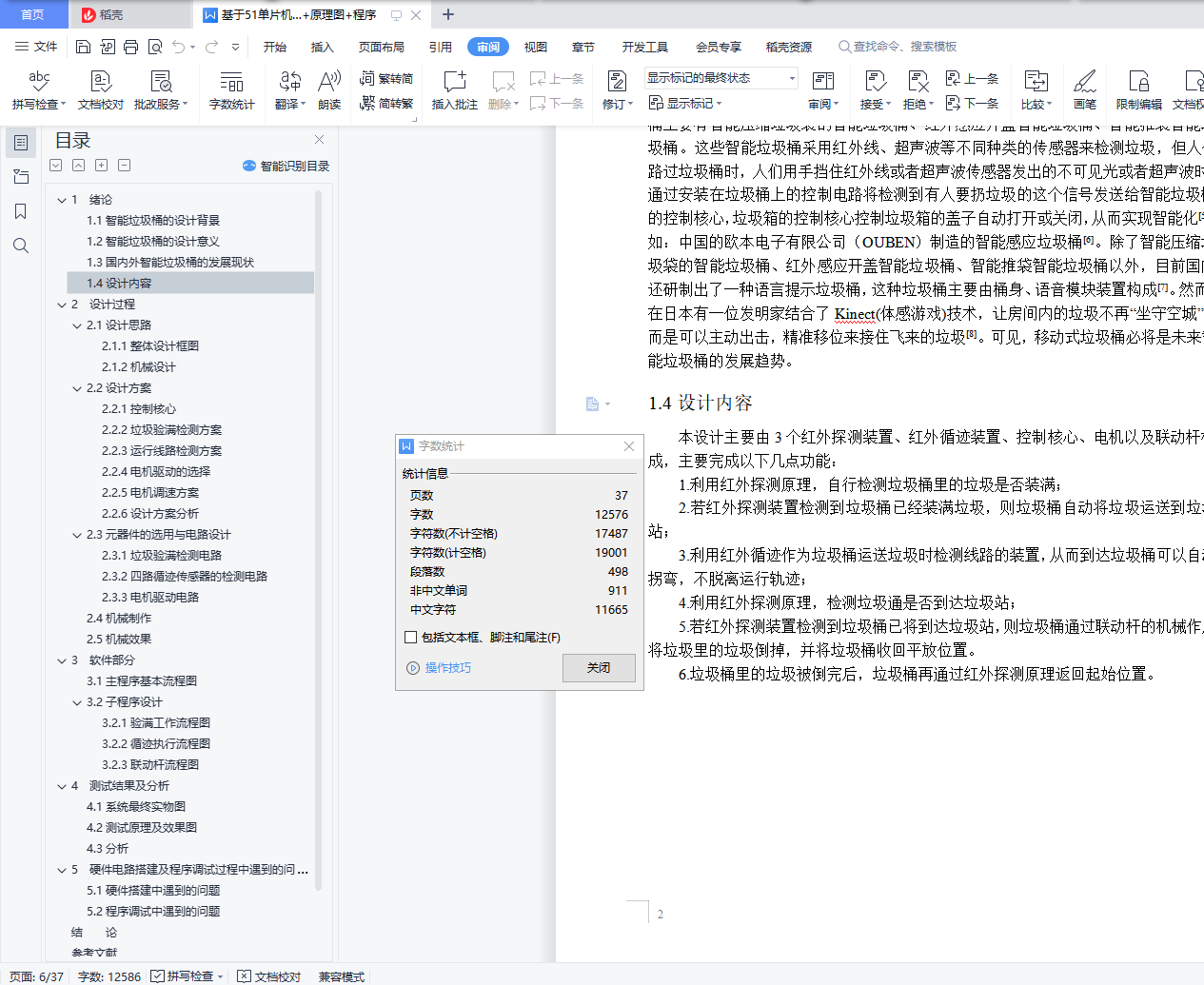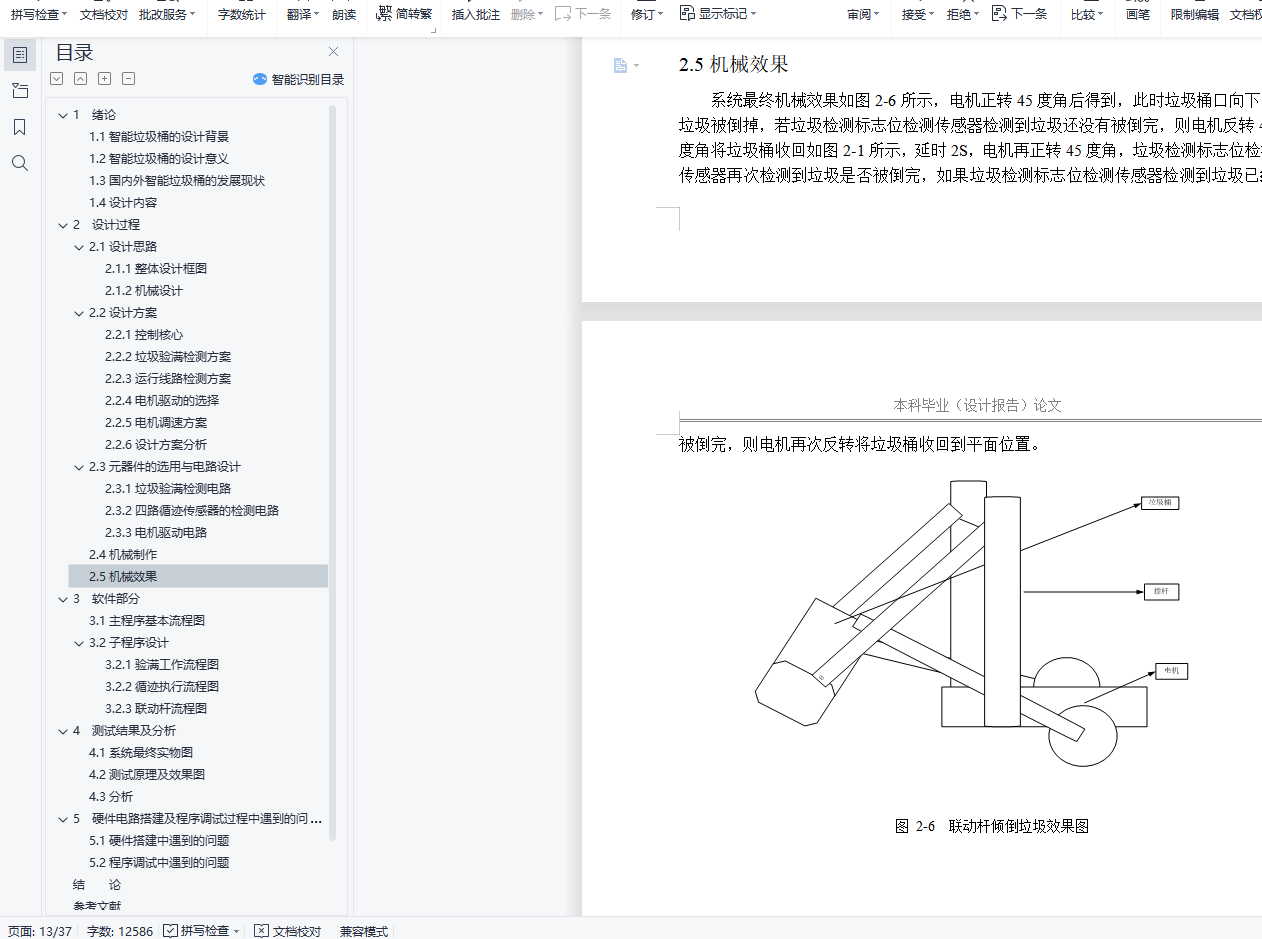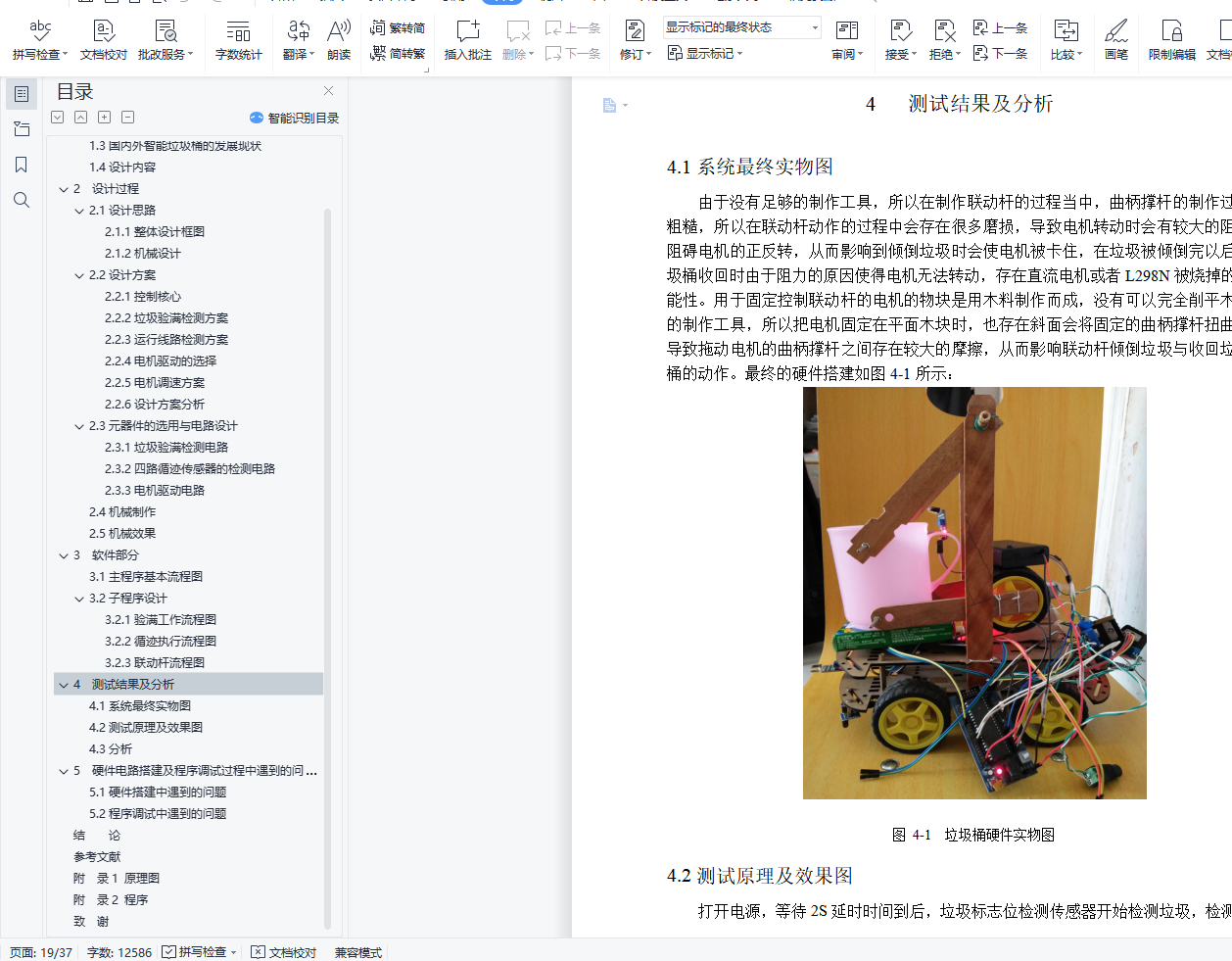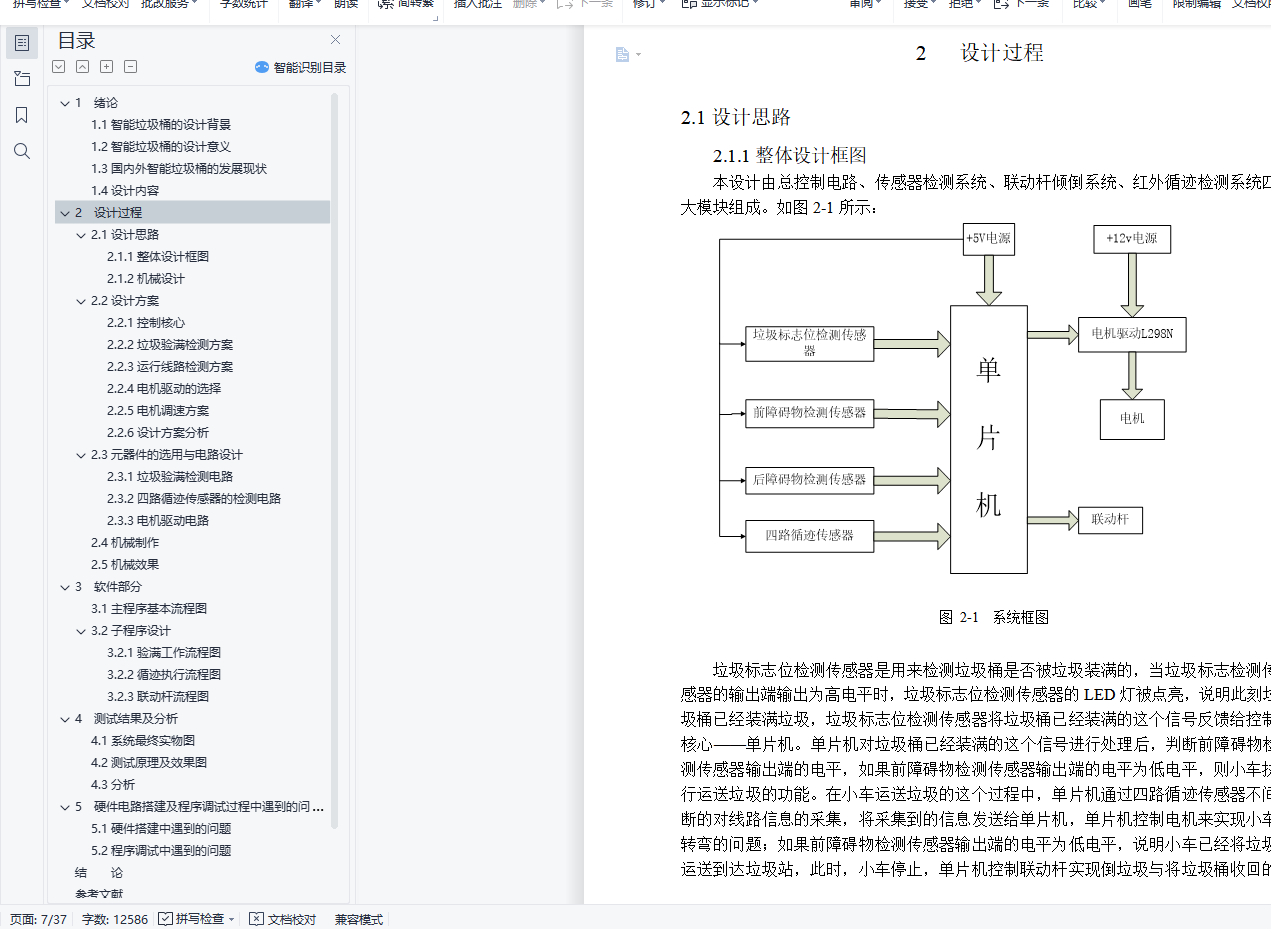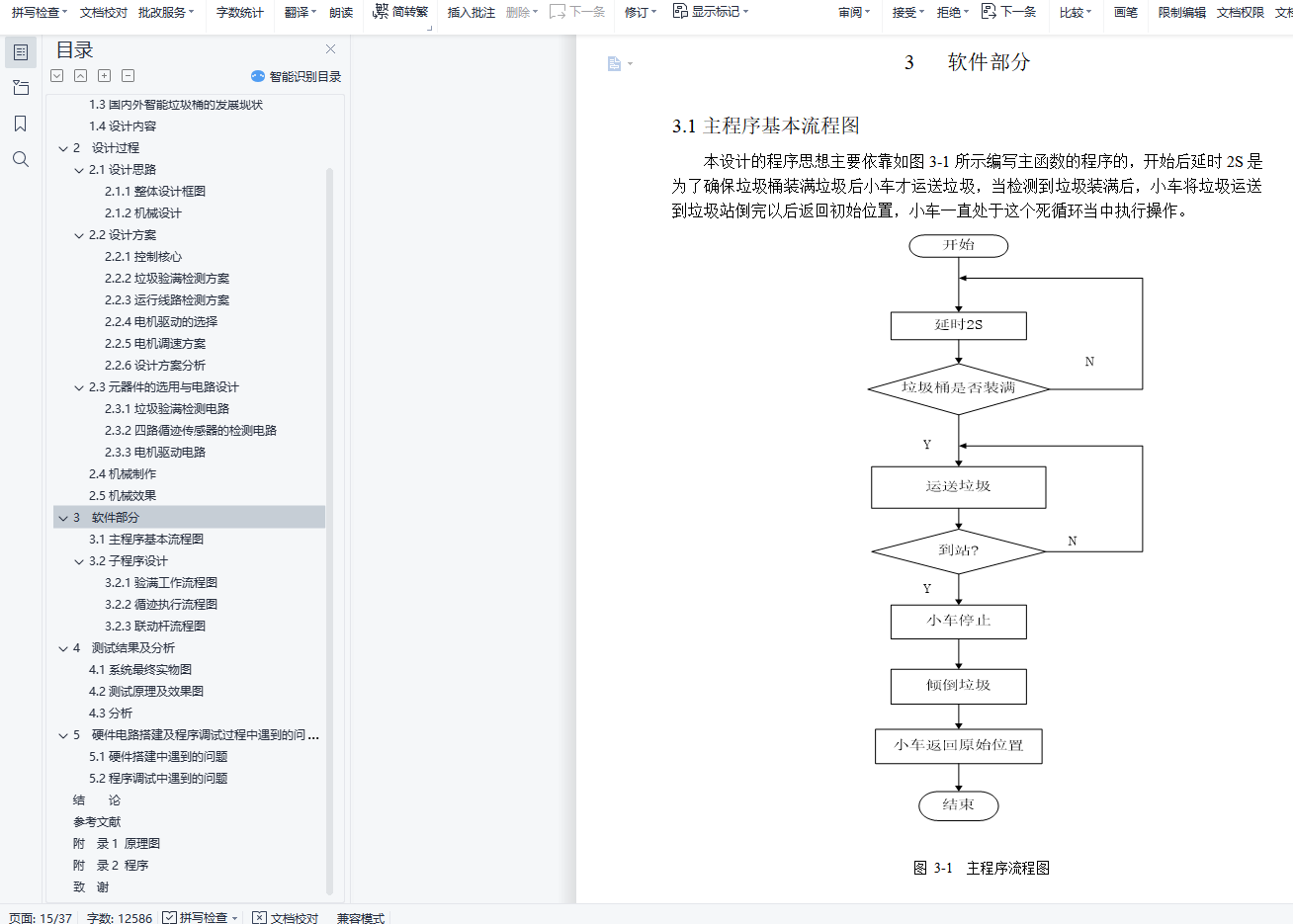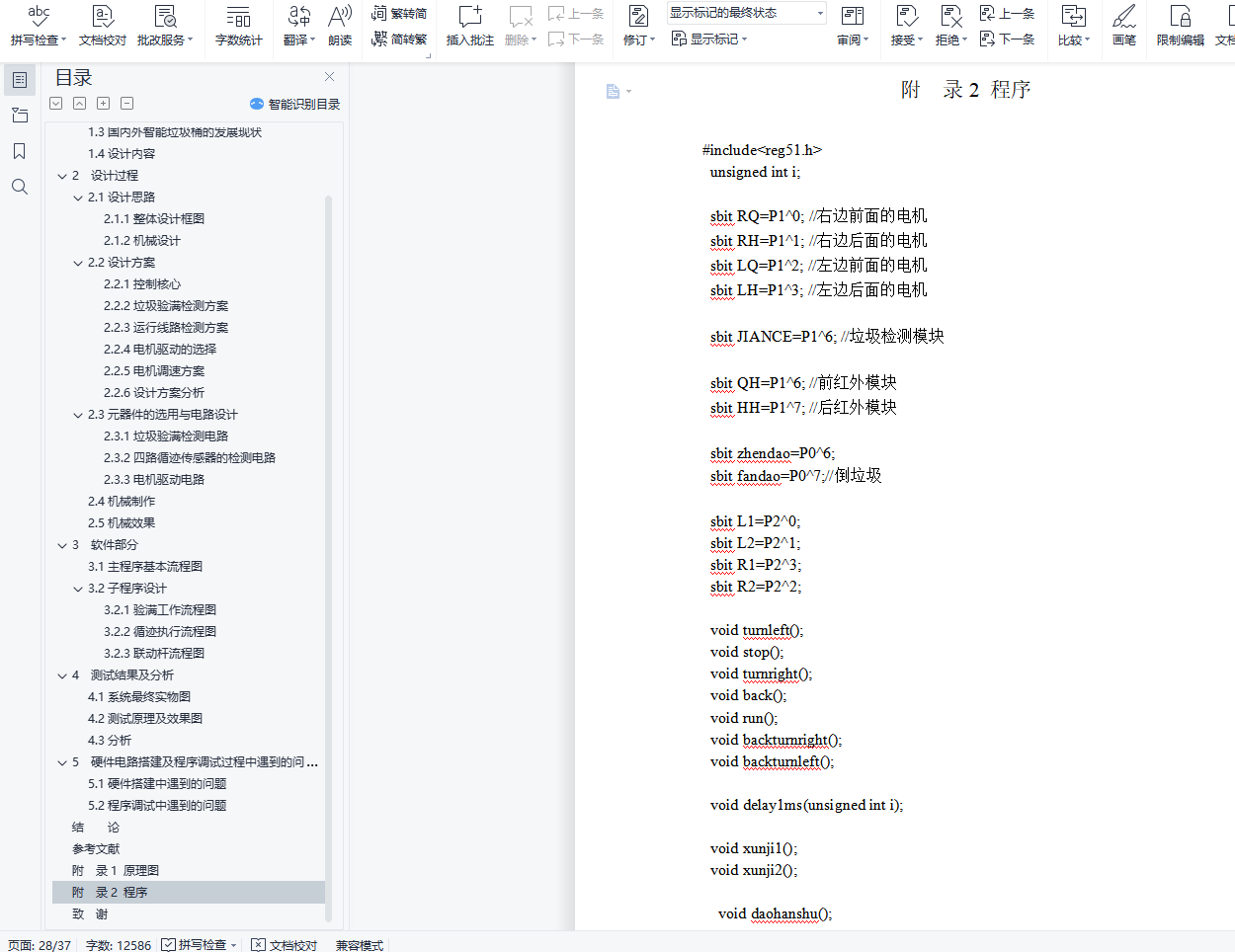摘 要
本设计的目的是设计出一款智能化的垃圾桶,检测装置采用红外传感器,当检测到垃圾桶内垃圾装满时,传感器向单片机发出信号,单片机处理接收到的信号后,通过载体垃圾桶自动将垃圾运送到垃圾站,此时单片机将电信号发送给联动系统,联动杆将垃圾桶内垃圾倒出,红外传感器再次检测垃圾是否倒完,将垃圾倒完后,垃圾桶通过循迹返回到初始位置。本设计的智能垃圾桶与传统的垃圾桶以及普通的智能垃圾桶相比较,自动化程度更高,功能性更强,直接帮助人们解决亲自处理垃圾的工作,达到与垃圾零接触,防止交叉感染,环保卫生,人们不需要接触垃圾桶,彻底的解决了传统的垃圾桶对使用者存在的卫生感染的隐患,能有效杜绝各种传染性疾病通过垃圾进行传播和防止桶内垃圾气味溢出,让人们的生活更加美好。
关 键 词:STC89C52;红外线探测装置;机械转动装置;联动杆
ABSTRACT
The purpose of this design is to design a trash of an intelligent detection device , using infrared sensors to detect when the trash is full of garbage, the infrared sensor sends a signal to the microcomputer ,the intelligent garbage will automatically transport the trash to trash station after the received signal was processed by microcomputer , then the microcomputer sends electrical signals to the linkage system and trashes will be poured out, infrared sensor detect that trashes were emptied, the intelligent garbage through tracking back to the initial position. The design compared with traditional intelligent garbage more functional, more intelligent to help people solve personally trashes disposal works, to prevent cross infection, environmental health, people do not need to contact trashes, completely solve the traditional trash on the health of the user infection risks, can effectively put an end to a variety of infectious diseases through the trashes for propagation and prevent trashes in the garbage can smell overflow, make people's lives better.
KEY WORDS: STC89C52; Infrared detecting device;Mechanical rotation device; Linkage rod
目 录
1 绪论 1
1.1智能垃圾桶的设计背景 1
1.2智能垃圾桶的设计意义 1
1.3国内外智能垃圾桶的发展现状 2
1.4设计内容 2
2 设计过程 3
2.1设计思路 3
2.1.1整体设计框图 3
2.1.2机械设计 4
2.2设计方案 4
2.2.1控制核心 4
2.2.2垃圾验满检测方案 5
2.2.3运行线路检测方案 5
2.2.4电机驱动的选择 6
2.2.5电机调速方案 6
2.2.6设计方案分析 6
2.3元器件的选用与电路设计 7
2.3.1垃圾验满检测电路 7
2.3.2四路循迹传感器的检测电路 8
2.3.3电机驱动电路 8
2.4机械制作 9
2.5机械效果 9
3 软件部分 11
3.1主程序基本流程图 11
3.2子程序设计 12
3.2.1验满工作流程图 12
3.2.2循迹执行流程图 13
3.2.3联动杆流程图 13
4 测试结果及分析 15
4.1系统最终实物图 15
4.2测试原理及效果图 15
4.3分析 16
5 硬件电路搭建及程序调试过程中遇到的问题 18
5.1硬件搭建中遇到的问题 18
5.2程序调试中遇到的问题 18
结 论 20
参考文献 21
附 录1 原理图 23
附 录2 程序 24
致 谢 33
